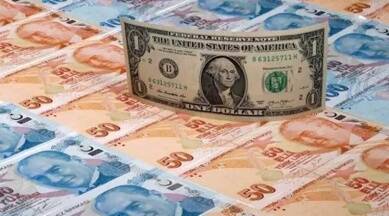
Disclaimer: Copyright infringement not intended.
Context
- India’s gold holdings have gone up to 760.42 tonnes, with the Reserve Bank of India (RBI).
- RBI’s gold acquisition happened at a time when foreign portfolio investors (FPIs) were exiting India and forex reserves declined by $44.73 billion from $642.45 billion in September 2021.
Read a comprehensive article on FPI at https://www.iasgyan.in/daily-current-affairs/fpi (uploaded yesterday).
What are Foreign Exchange Reserves?
- Foreign-exchange reserves (also called forex reserves or FX reserves) are money or other assets held by a central bank or other monetary authority.
- The assets are held so that it can pay its liabilities (if needed), such as the currency issued by the central bank, various bank reserves deposited with the central bank by the government and other financial institutions.
- Reserves are held in one or more reserve currency, mostly the United States dollar and to a lesser extent the EU's euro, the British pound sterling, and the Japanese yen.
- Foreign exchange reserves should ideally include foreign bank notes, foreign bank deposits, foreign treasury bills, and short and long-term foreign government securities.
- However, they also include gold reserves, special drawing rights (SDRs), and International Monetary Fund (IMF) reserve positions.
- This broader figure, along with SDR’s, gold reserves and IMF reserve positions is more readily used.
Thus, in a nutshell, Foreign Exchange Reserves include-
- Reserves held in US Dollars, The Euro, The British Pound or the Japanese Yen
- Foreign bank notes, foreign bank deposits, foreign treasury bills and short term and long term foreign government securities
- Gold reserves
- Special Drawing Rights and International Monetary Fund reserve positions
- Foreign-exchange reserves are called reserve assets in the balance of payments and are located in the capital account. Hence, form an important part of the international investment position of a country.
Importance of Forex reserves
- Forex reserves give comfort to the government and the RBI in managing India’s external and internal financial issuesat a time of major contraction in economic growth.
- It serves as a cushion in the event of a crisis on the economic front, and is enough to cover the import bill of the country for a year.
- Forex Reserves helps the rupee to strengthen against the dollar.The foreign exchange reserves to GDP ratio is around 15 per cent.
- Reserves provide a level of confidence to markets that a country can meet its external obligations, demonstrate the backing of domestic currency by external assets, assist the government in meeting its foreign exchange needs and external debt obligations and maintain a reserve for national disasters or emergencies.
What does the RBI do with the forex reserves at its disposal?
- The Reserve Bank functions as the custodian and manager of forex reserves, and operates within the overall policy framework agreed upon with the government.
- The RBI allocates the dollars for specific purposes. For example, under the Liberalised Remittances Scheme, individuals are allowed to remit up to $250,000 every year.
- The RBI uses its forex kitty for the orderly movement of the rupee.
- It sells the dollar when the rupee weakens and buys the dollar when the rupee strengthens.
- When the RBI mops up dollars, it releases an equal amount in rupees. This excess liquidity is sterilised through the issue of bonds and securities and LAF operations.
Why have the reserves declined recently?
- The reserves declined due to selling of dollars by RBI.
Description:
- When the rupee fell below the 77 level after the Russia-Ukraine war intensified and crude oil prices flared up, the Reserve Bank of India (RBI) sold dollars to prevent a further slide in value.
- The RBI’s intervention — dollar sales through PSU banks — started when the rupee crossed the 76-level and headed to the 77-mark.
- The RBI sold $5.135 billion to banks and simultaneously agreed to buy back the dollars at the end of the swap-settlement period.
- When the central bank sells dollars, it takes out an equivalent amount in rupees, thus reducing the rupee liquidity in the system.
- Dollar inflow into the market strengthened the rupee which hit the 77-mark against the dollar on March 8. On March 17, the rupee spurted by 41 paise to close at 75.80/81 against the US dollar on Thursday (March 17).
Why did the foreign currency assets fall?
- The main components of forex reserves are foreign currency assets (FCA), gold holdings and SDRs (special drawing rights) of the International Monetary Fund.
- The RBI sold dollars from its FCA kitty — kept in global central banks, foreign banks and foreign securities — to strengthen the rupee.
Note: The fall in India’s foreign exchange reserves came after it had risen by $394 million to $631.92 billion during the previous week ending March 4. It had touched a lifetime high of $642.453 billion in the week ending September 3, 2021.
IMPORTANT LINKS
https://www.iasgyan.in/blogs/bond-yield
https://www.iasgyan.in/daily-current-affairs/monetary-policy
https://www.iasgyan.in/blogs/key-economic-concepts-back-to-basics#:~:text=Monetary%20policy%20is%20the%20macroeconomic,%2C%20consumption%2C%20growth%20and%20liquidity
https://indianexpress.com/article/business/economy/as-fpi-exits-hit-forex-reserves-rbi-stepped-up-gold-purchases-7914507/




